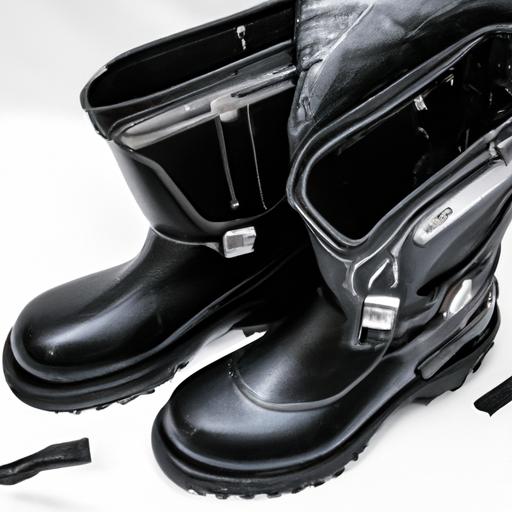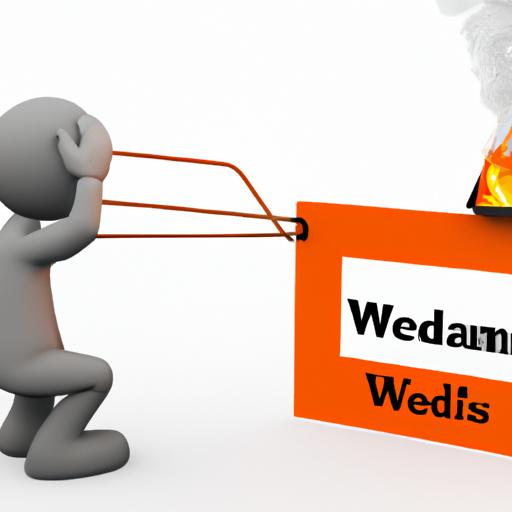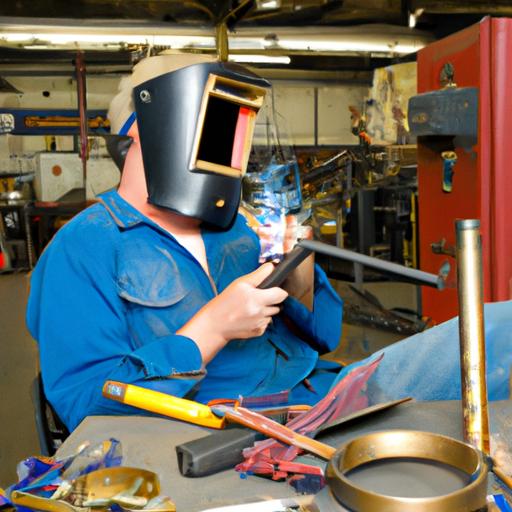3ds Max Can’t Weld Vertices: Solving the Mystery of Seamless 3D Modeling
Are you a 3D modeling enthusiast who loves exploring the endless possibilities offered by 3ds Max? This powerful software has become a go-to tool for artists, architects, and designers worldwide. With its array of features and capabilities, 3ds Max empowers users to create stunning visual representations of their imagination. However, one common hurdle that can hinder your modeling journey is the challenge of welding vertices seamlessly.
Vertex welding, a critical aspect of 3D modeling, plays a pivotal role in creating smooth and realistic models. It involves merging or “welding” multiple vertices together to eliminate gaps and ensure a cohesive structure. However, you may have encountered the frustrating roadblock of 3ds Max not being able to weld vertices as desired. Fear not, for in this article, I will guide you through the intricacies of vertex welding in 3ds Max and provide troubleshooting techniques to overcome this obstacle.
Before delving into solutions, let’s understand why vertex welding is of paramount importance. Imagine constructing a 3D model of a stunning architectural masterpiece, only to have visible gaps or inconsistencies between vertices. These imperfections can mar the aesthetics and realism of your creation. Vertex welding bridges these gaps, allowing for a seamless flow of geometry and enhancing the overall visual appeal of your model.
Now that we comprehend the significance of vertex welding, let’s unravel the mysteries behind 3ds Max failing to weld vertices. Stay tuned for the next section, where we will explore the common issues that may arise during vertex welding in 3ds Max and shed light on why this challenge occurs. Together, we’ll conquer this hurdle and unlock the true potential of seamless 3D modeling!
Understanding Vertex Welding in 3ds Max
A. Definition and Purpose of Vertex Welding
In the realm of 3D modeling, vertex welding refers to the process of merging or fusing two or more vertices together, creating a single vertex at their shared position. This technique is employed to eliminate gaps and irregularities between vertices, resulting in a more cohesive and visually appealing model.
Vertex welding serves a crucial purpose in achieving realistic and seamless 3D models. By welding vertices, you ensure that the surfaces and edges flow smoothly, creating a natural and polished appearance. Without proper welding, models can appear disjointed, with visible gaps that compromise their authenticity.
B. Benefits of Properly Welded Vertices in 3D Models
When vertices are accurately welded, the benefits are manifold. Firstly, it allows for the creation of intricate and complex geometries with precision and ease. Whether you are sculpting organic shapes, constructing architectural designs, or designing intricate mechanical parts, properly welded vertices provide a solid foundation for your model’s structure.
Moreover, seamless vertex welding ensures that light and textures interact realistically with the model’s surfaces. Shadows and reflections appear smooth, enhancing the overall visual quality. This attention to detail brings your creation to life, captivating the viewer’s eye with a sense of realism and immersion.
Additionally, properly welded vertices contribute to efficient rendering and optimization. By eliminating unnecessary vertices and gaps, the model’s geometry becomes more streamlined, resulting in faster renders and improved performance. This optimization is particularly beneficial when working on complex scenes or animations.
Now that we have gained a deeper understanding of vertex welding and its importance, let’s move forward to the next section. Here, we will explore the common issues that may arise when attempting to weld vertices in 3ds Max and uncover the reasons behind these challenges. Stay tuned for valuable troubleshooting techniques to overcome these obstacles and achieve flawless vertex welding!
Common Issues with Welding Vertices in 3ds Max
A. Overview of the Potential Problems Users Might Encounter
When it comes to welding vertices in 3ds Max, several common issues can hinder your progress. Let’s take a closer look at these stumbling blocks and understand the challenges you might face.
1. Non-weldable Vertices:
Sometimes, you may encounter vertices that cannot be welded together. These non-weldable vertices can arise due to various reasons, such as incompatible geometry or different smoothing groups. Identifying these vertices is crucial to ensure a successful welding process.
2. Threshold Value for Welding:
The threshold value plays a significant role in determining which vertices are considered close enough to be welded together. Setting the threshold value too high can lead to unintended welding, resulting in distorted geometry. On the other hand, a threshold value set too low might cause vertices that should be welded together to remain separate. Finding the optimal threshold value is essential for achieving accurate and seamless welding results.
B. Detailed Explanation of Why 3ds Max Might Fail to Weld Vertices
Now that we have an overview of the potential issues, let’s dive deeper into why 3ds Max sometimes fails to weld vertices as expected.
1. Disconnected Geometry:
3ds Max may struggle to weld vertices if the geometry is disconnected or not properly aligned. This can occur when working with imported models or when working on complex scenes with multiple objects. Ensuring proper connectivity and alignment between vertices is crucial to overcome this hurdle.
2. Overlapping or Intersecting Objects:
Another common scenario where 3ds Max fails to weld vertices is when objects overlap or intersect. Welding vertices in such cases can lead to undesired results, as the overlapping geometry can create inconsistencies and artifacts. It’s essential to resolve any overlapping or intersecting objects before attempting to weld vertices.
By understanding these common issues and the reasons behind 3ds Max failing to weld vertices, you are equipped with the knowledge to tackle these challenges head-on. In the next section, we will explore troubleshooting techniques that will help you overcome these obstacles and achieve seamless vertex welding in 3ds MaLet’s embark on this journey together!
Troubleshooting Techniques for “3ds Max Can’t Weld Vertices” Error
Are you frustrated by the perplexing error message that pops up when attempting to weld vertices in 3ds Max? Fear not, as I’m here to guide you through a step-by-step troubleshooting process to identify and resolve these vertex welding issues. Let’s dive in and unleash the power of seamless vertex welding!
A. Step-by-step guide to identifying and resolving vertex welding issues
-
Checking for non-weldable vertices: It’s crucial to ensure that the vertices you are attempting to weld are compatible. Some vertices, such as those belonging to open edges or non-manifold geometry, may not be weldable. Verify if the vertices meet the necessary criteria for welding and make adjustments accordingly.
-
Adjusting the threshold value for welding: The threshold value determines the proximity at which vertices are considered weldable. If you’re facing difficulties in welding vertices, try modifying the threshold value. Experiment with different values to find the optimal setting that allows for successful welding.
-
Ensuring proper geometry alignment: Misaligned geometry can hinder vertex welding. Double-check the alignment of your geometry, ensuring that vertices intended for welding are properly aligned. Make use of snapping tools, such as vertex snapping, to align vertices accurately.
-
Checking for overlapping or intersecting objects: Overlapping or intersecting objects can create complications during vertex welding. Before attempting to weld vertices, inspect your model for any overlapping or intersecting geometry. If such issues are detected, adjust the positioning or modify the geometry to eliminate overlaps or intersections.
-
Using additional plugins or scripts for vertex welding: In some cases, the default vertex welding functionality in 3ds Max might not suffice. Explore additional plugins or scripts specifically designed for vertex welding. These can offer enhanced functionality and overcome any limitations you may encounter.
By following these troubleshooting techniques, you’ll be equipped to tackle the vexing “3ds max can’t weld vertices” error head-on. Stay tuned for the next section, where we’ll explore alternative solutions for welding vertices in 3ds Max, providing you with even more options to achieve seamless 3D modeling perfection!
Alternative Solutions for Welding Vertices in 3ds Max
Exploring alternative methods to achieve desired vertex welding results
When faced with the frustration of 3ds Max not being able to weld vertices as expected, it’s time to explore alternative solutions. Let’s dive into some techniques that can help you achieve the desired results:
1. Using third-party modeling software for welding
Sometimes, the limitations of 3ds Max in vertex welding can be overcome by utilizing external modeling software. These tools often offer advanced vertex manipulation features, allowing for more precise control over welding operations. By importing your 3D model into third-party software, you can leverage their specialized tools to achieve seamless vertex welding. Be sure to choose a reputable software that aligns with your specific modeling needs.
2. Manual vertex alignment techniques
If you prefer to work within 3ds Max itself, manual vertex alignment techniques can come to the rescue. While it may be time-consuming, manually aligning vertices can be a viable solution when the automatic welding functionality falls short. Select the problematic vertices and use the available transformation tools to carefully align and merge them manually. This hands-on approach ensures complete control over the welding process, resulting in precise and seamless vertex connections.
3. Utilizing boolean operations for mesh fusion
Another alternative solution lies in utilizing boolean operations, specifically mesh fusion. Boolean operations involve combining multiple objects or meshes to create a unified structure. By using the boolean union operation, you can merge the vertices of two or more overlapping objects, effectively welding them together. However, it’s important to note that boolean operations can introduce additional complexities, such as non-manifold geometry or overlapping faces. Exercise caution and be prepared to address any resulting issues.
With these alternative solutions at your disposal, you can overcome the limitations of 3ds Max’s vertex welding functionality. Experiment with different methods and find the approach that best suits your needs. Now, let’s move towards the conclusion of our exploration and summarize the troubleshooting techniques and alternative solutions we’ve covered so far.
Conclusion
In conclusion, the ability to weld vertices seamlessly in 3ds Max is crucial for achieving stunning and realistic 3D models. Throughout this article, we have explored the intricacies of vertex welding, identified common issues faced by users, and provided troubleshooting techniques to overcome the “3ds Max can’t weld vertices” challenge.
By following the step-by-step guide and implementing alternative solutions, you can overcome obstacles and ensure a smooth workflow in your 3D modeling endeavors. Remember to check for non-weldable vertices, adjust the threshold value, align geometry properly, and examine for overlapping or intersecting objects. Additionally, consider utilizing third-party software, manual vertex alignment techniques, or boolean operations for mesh fusion as alternative solutions.
As you continue to experiment and explore different approaches to welding vertices, don’t forget to harness the power of your creativity. 3ds Max offers a vast array of tools and features that allow you to breathe life into your artistic vision. Embrace the process, learn from challenges, and strive for excellence in every model you create.
Now that you possess the knowledge and techniques to conquer vertex welding issues, it’s time to embark on your 3D modeling journey with confidence. Unleash your creativity, push the boundaries, and create awe-inspiring models that captivate and engage your audience.
Remember, in the realm of 3D modeling, the ability to seamlessly weld vertices is the key to unlocking the true potential of your imagination. So, go forth and conquer the “3ds Max can’t weld vertices” mystery, and let your creations shine!



